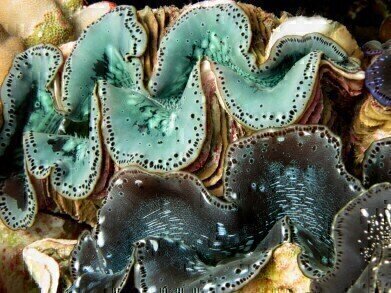Green Energy
Giant Clam Shells Inspire Solar Power Scientists
Oct 29 2014
Glimmering giant clam shells cover the ocean floor, but it’s not merely marine biologists who are taking an interest. Recent research has shown that the shells of giant clams are not just beautiful, they serve an important purpose too.
Giant clam shells are covered in a pearlescent coating. This iridescent coating actually directs beams of sunlight into the clams’ interior, providing clusters of algae living inside the clams with a source of light. Subsequently, the algae photosynthesise, providing the clam with energy. "It ends up being a large part of the energy budget of the clams," explains study researcher Alison Sweeney, an assistant professor of physics and astronomy at the University of Pennsylvania.
Interest piqued, Sweeney and her team travelled to Palau, a small island found to the east of the Philippines, where giant clams reside in abundance. Using a state of the art fibre optic probe, Sweeny and her colleagues gathered data relating to how much light penetrated the clams’ pearly shells. Surprisingly, they found that the clam shells actually directed an astonishing amount of light in to the clams.
A “surprising discovery”
"We're very excited by our surprising discovery," said study researcher Dan Morse, a professor of bio molecular science and engineering, and director of the Marine Biotechnology Center at the University of California, Santa Barbara.
The reflective cells found within the giant clams’ shells redirect photons from sunlight deep into the clams’ tissue. Here, light illuminates algae, which generate energy for the clam. In effect, giant clams boast a natural solar energy system (inside their shells).
The beauty of algae
Sweeny and her team weren’t merely impressed by the clam shells - they were astonished by the algae too, which was also configured extremely efficiently. The algae is found in vertical columns, not horizontal rows, which allow the reflective cells to shine light along the sides of the columns as well as the algae on top.
Using these findings, scientists are expected to begin developing new forms of clean technology, such as more versatile solar cells. For instance, while today’s solar cells work well in direct sunlight, they often overheat and cease to be efficient. Using what we know of the giant clam, we may be able to develop a solar panel which is able to stay cool – even when exposed to soaring temperatures.
Euichi Hirose, a professor of invertebrate biology at the University of the Ryukyus in Japan, told Live Science in an email: "Now, we know the giant-clam mantle has a more sophisticated function than we expected. The colourful mantle reflects useless light for photosynthesis (green and yellow) and scatters useful light (red and blue) forward, and laterally, into deep tissue."
The next step
This isn’t the only step forward for solar power. Theoretical work on the creation of third-generation solar cells is set to begin at the University of Salford. The new cells aim to increase the solar panels efficiency from ten per cent to 31 per cent or more, which you can read about in this article, Quantum Physics Could Create More Effective Solar Cells.
Events
Apr 22 2024 Hannover, Germany
Apr 23 2024 Kuala Lumpur, Malaysia
Apr 24 2024 Sao Paulo, Brasil
May 05 2024 Seville, Spain
May 13 2024 Munich, Germany














